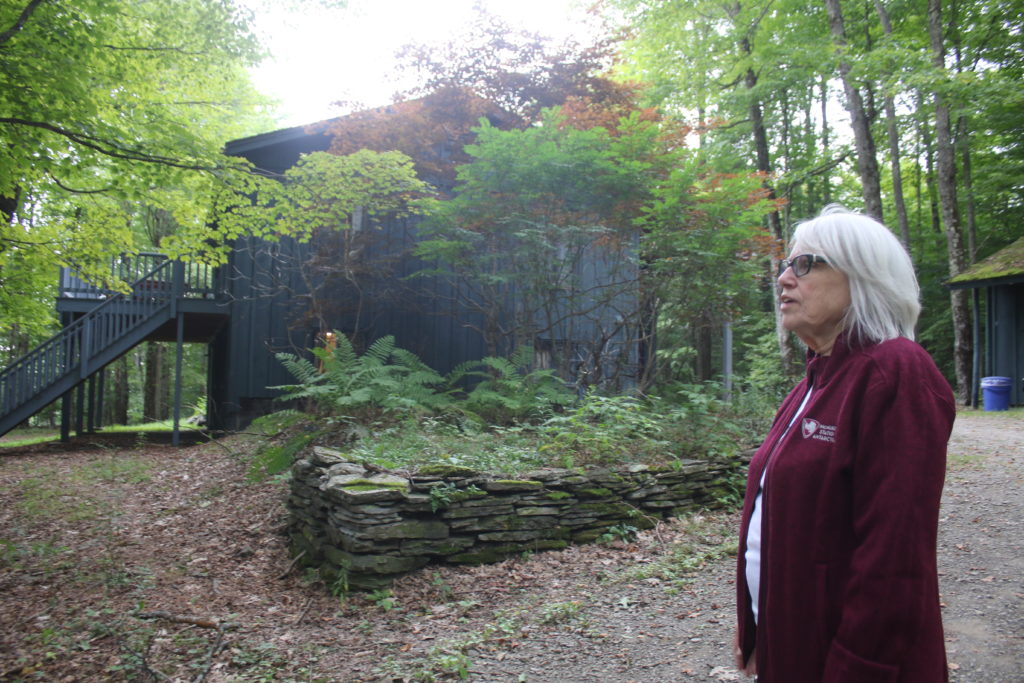Artists From Antarctica
Meet At Laurens Retreat

By LIBBY CUDMORE • Special To ALLOTSEGO.com
LAURENS – Musician Henry Kaiser had never met Cheryl Leonard before, but they both knew they had more than music in common.
Both had been part of the National Science Foundation’s Antarctic Artist & Writers program, which invites artists to the seventh continent to work with scientists, using what they see, hear and experience
as material in their artwork. “She said she used animal bones and rocks to make music,” said Kaiser.
“I’m recording a composition with Weddell Seal sounds, and I found a skull for her to play on my piece.”
“I love the wilderness and using natural objects as instruments,” said Leonard. “And Antarctica is some of the last wilderness we really have.”
Karen Shafer, owner of Aunt Karen’s Farm in the Laurens hills, knew the Artist and Writer Program from her time in Antarctica and worked with composer Glenn McClure to invite other artists to the retreat, marking the first gathering of its kind in the area.
The retreat, over this past weekend, drew a dozen artists from across the United States and as far away as Germany. “How many people have been to Antarctica?” said Shafer. “We’ve only been going there for a little over 100 years. It’s a small group, but they’ve all shared this adventure.”
And Shafer, who retired as a funding compliance officer at Lincoln Center in 2011, is no stranger to Antarctica. “I knew someone who had worked there, and I thought to myself, ‘One day, I am going to do that.’”
When she retired in 2011, she drove a truck across the ice shelf for two years. “They called me ‘Shuttle Shafer,’” she said. “I drove this big truck, and when it was time to get in, they’d all come out and watch me climb up into it!”
In 1988, she bought a farmhouse here, and over time, bought the houses around it. She eventually turned the campus – it includes four houses – into an artist’s retreat.
She knew Elaine from her time in Antarctica, and they worked with composer Glenn McClure to invite the artists to the retreat, marking the first gathering of its kind.
“The artists were curious about who the other alumni were,” said Shafer. “Since I had been there, I thought my farm would be an appropriate place to host the first gathering.”
The gathering included composers, photographers, sculptors, textile artists and writers. “To get into the program, an artist has to propose an agenda,” said “Ghetto Cowboy” author Greg Neri. “I had a broad agenda, making science accessible to inner city kids, so I was allowed to go around with a couple different teams. The mission is to do the research you need to do your art, without getting killed.”
He said that he adapted quickly to the frigid conditions. “The only time I was cold was when I was out on the snowmobile and I got windburn on my face,” he said. “It was 40, 50 below. Other than that, you can adapt quickly.”
Sculptor Helen Glazer, who photographed icebergs, glaciers and ice caves, 3D prints her imagery and recently finished an exhibit at the Baltimore-Washington International terminal, will give a talk about her work at Colgate University in October. “I was interested in ice, how wind and water shaped the landscape,” she said. “And Antarctica was the best place to see it!”
Shaffer is hoping to make the gathering an annual event. “I didn’t want anyone to produce any new work,” said Shafer. “This was about sharing what they did in Antarctica and to begin to think about how we can expand the conversation.”

